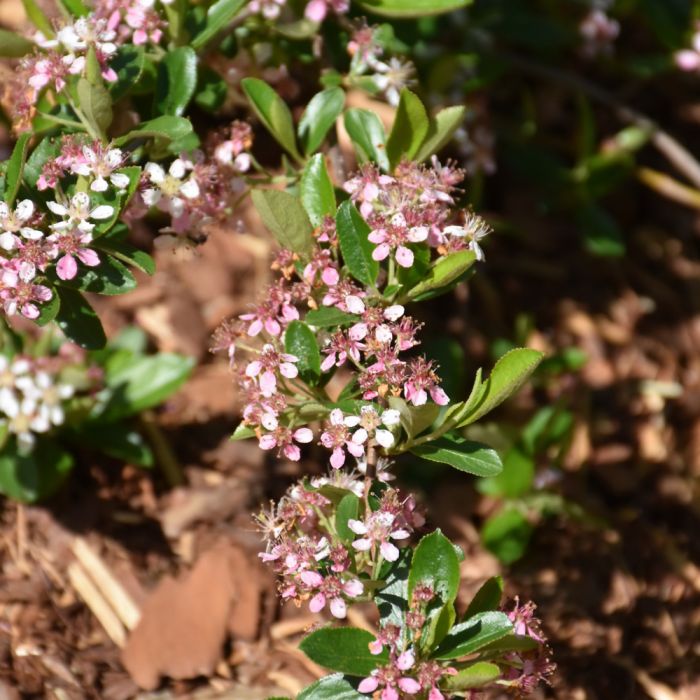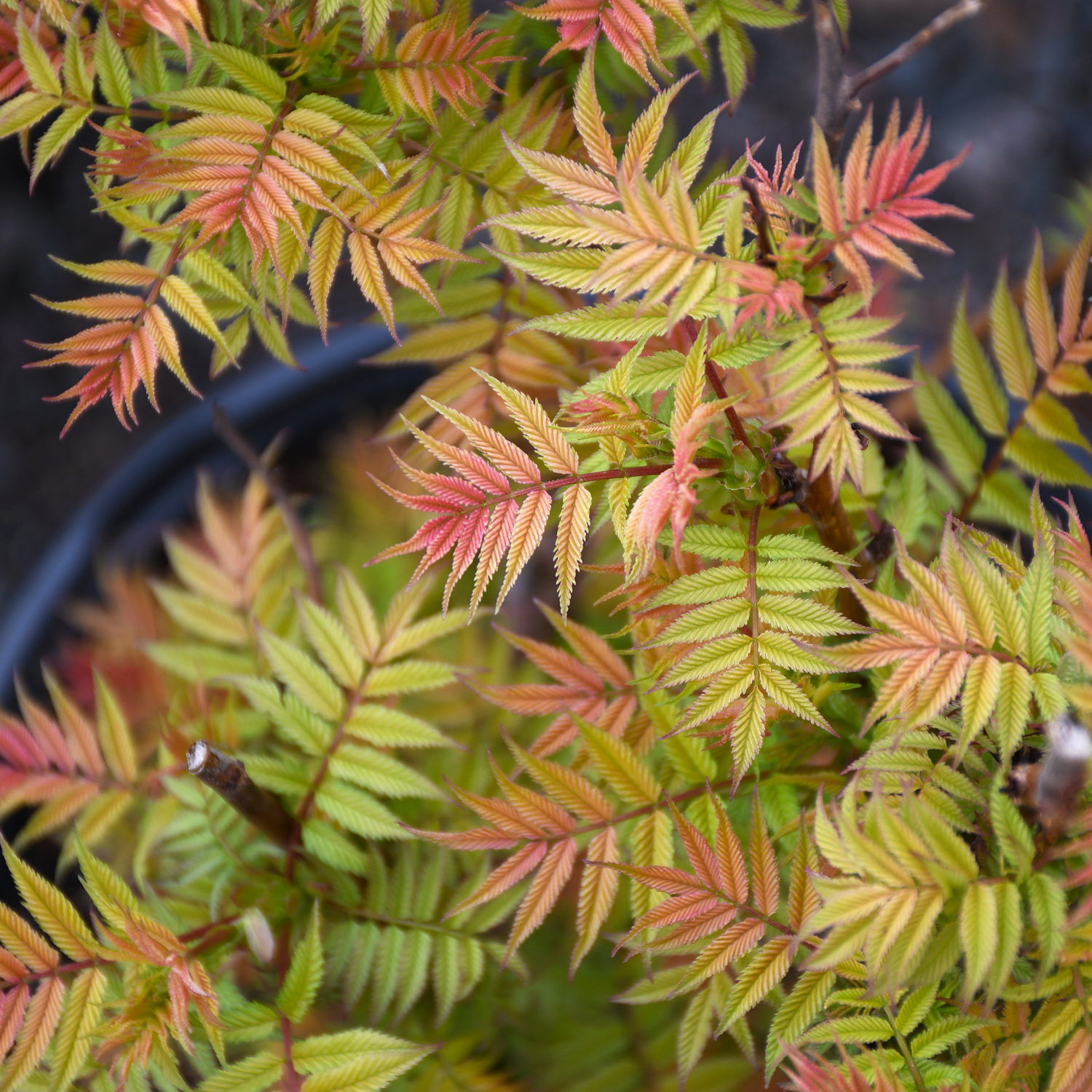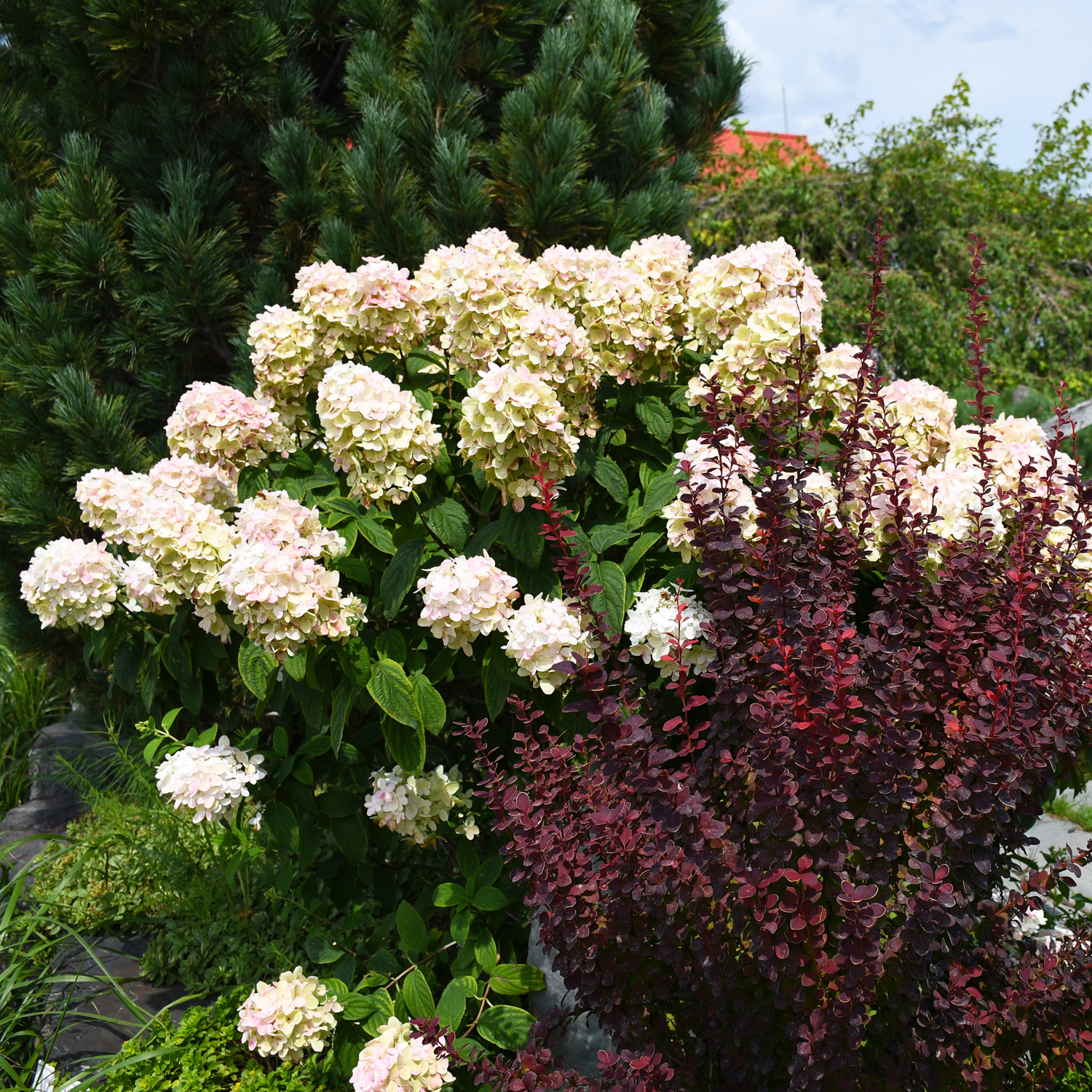Aronia, Black Chokeberry 'Ground Hog™'



- Sun Preference
- Full-Sun, Part-Sun
- Bloom Time
- April, May
Description
Ground Hog™ Black Chokeberry | Aronia melanocarpa 'UCONNAM012'
A low, spreading variety with glossy dark green leaves, and showy white flowers in spring; a great choice for edging and groundcover; brilliant red foliage in fall to contrast the dark purple-black fruit; very adaptable and grows well in tough conditionsMinnesota's Largest Selection of Shrubs
Elevate your landscaping with Gertens' unmatched variety of shrubs! Selecting the right shrubs for your backyard can enhance its beauty and functionality. Consider factors like sunlight, soil type, and mature size when choosing shrubs. For sunny areas, flowering shrubs like roses or hydrangeas can add color and charm. In shady spots, opt for shrubs like azaleas or hostas. Evergreen shrubs provide year-round interest and privacy, while deciduous shrubs offer seasonal color changes. At Gertens, we offer a wide selection of shrubs to suit every backyard need.
Details
Ground Hog™ Black Chokeberry features showy panicles of white star-shaped flowers with pink overtones at the ends of the branches in mid spring. It features an abundance of magnificent black berries from late summer to mid fall. It has forest green foliage with olive green undersides. The glossy oval leaves turn an outstanding red in the fall.
Ground Hog™ Black Chokeberry is a multi-stemmed deciduous shrub with a ground-hugging habit of growth. Its average texture blends into the landscape, but can be balanced by one or two finer or coarser trees or shrubs for an effective composition.
This shrub will require occasional maintenance and upkeep, and should only be pruned after flowering to avoid removing any of the current season's flowers. Gardeners should be aware of the following characteristic(s) that may warrant special consideration;
- Suckering
Ground Hog™ Black Chokeberry is recommended for the following landscape applications;
- Mass Planting
- Border Edging
- Groundcover
- Container Planting
Ground Hog™ Black Chokeberry will grow to be about 12 inches tall at maturity, with a spread of 3 feet. When grown in masses or used as a bedding plant, individual plants should be spaced approximately 3 feet apart. It tends to fill out right to the ground and therefore doesn't necessarily require facer plants in front. It grows at a slow rate, and under ideal conditions can be expected to live for approximately 20 years.
This shrub does best in full sun to partial shade. It is an amazingly adaptable plant, tolerating both dry conditions and even some standing water. It is not particular as to soil type or pH, and is able to handle environmental salt. It is somewhat tolerant of urban pollution. This is a selection of a native North American species.
Ground Hog™ Black Chokeberry makes a fine choice for the outdoor landscape, but it is also well-suited for use in outdoor pots and containers. Because of its spreading habit of growth, it is ideally suited for use as a 'spiller' in the 'spiller-thriller-filler' container combination; plant it near the edges where it can spill gracefully over the pot. Note that when grown in a container, it may not perform exactly as indicated on the tag - this is to be expected. Also note that when growing plants in outdoor containers and baskets, they may require more frequent waterings than they would in the yard or garden. Be aware that in our climate, most plants cannot be expected to survive the winter if left in containers outdoors, and this plant is no exception. Contact our experts for more information on how to protect it over the winter months.
More Information
| Gerten Grown Plants | Gerten Grown Plants |
|---|---|
| Bloom Time | April, May |
| Sun Preference | Full-Sun, Part-Sun |
| Mature Height (Range) | under 2 feet |
| USDA Hardiness Zone | 3, 4, 5, 6, 7, 8, 9 |
| Common Family Name | Chokeberry |


